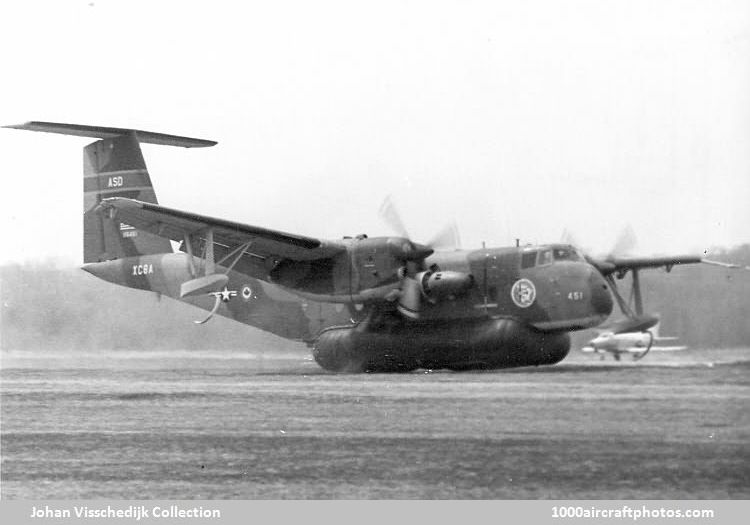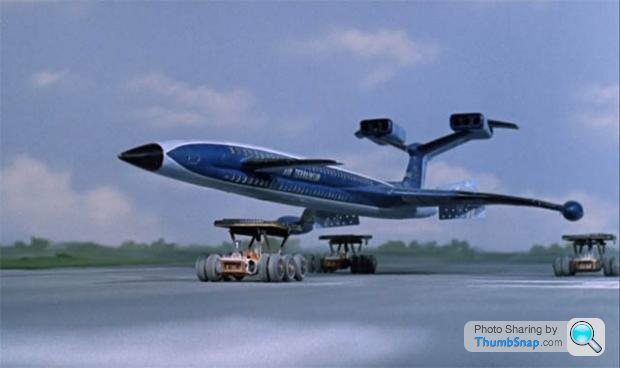Pre-rotating of aircraft wheels before landing?
Discussion
Blaster72 said:
Why take something that works well, lasts a long time and doesn't cause safety issues and lumber it with extra complication.
The cost savings would be minimal, extra weight carried just for one phase of flight burdensome on fuel consumption and the extra equipment an added maintenance burden.
Thats without even considering that dangling 20 huge gyroscopes under the aircraft may have some small effect on handling during this critical phase of flight (20 in the case of an A380 main wheels)
I personally think its a non starter as all airlines are looking to strip out any unnecessary weight to save fuel rather than add more weight in. In the grand scheme of things tyre wear due to touchdown speeds isn't a huge cost, more damage is done braking on grooved runways and taking high speed exits from the runways. A lot of tyre wear also occurs when turning tight intersections and during pushback.
For electric taxiing the cost savings are far from "minimal". The development of driven wheels for aircraft is being taken very seriously: http://www.greentaxiing.com/index.htmlThe cost savings would be minimal, extra weight carried just for one phase of flight burdensome on fuel consumption and the extra equipment an added maintenance burden.
Thats without even considering that dangling 20 huge gyroscopes under the aircraft may have some small effect on handling during this critical phase of flight (20 in the case of an A380 main wheels)
I personally think its a non starter as all airlines are looking to strip out any unnecessary weight to save fuel rather than add more weight in. In the grand scheme of things tyre wear due to touchdown speeds isn't a huge cost, more damage is done braking on grooved runways and taking high speed exits from the runways. A lot of tyre wear also occurs when turning tight intersections and during pushback.
Doesn't mention spinning up the wheels when landing though so that may not be viable / sensible.
C0ffin D0dger said:
Blaster72 said:
Why take something that works well, lasts a long time and doesn't cause safety issues and lumber it with extra complication.
The cost savings would be minimal, extra weight carried just for one phase of flight burdensome on fuel consumption and the extra equipment an added maintenance burden.
Thats without even considering that dangling 20 huge gyroscopes under the aircraft may have some small effect on handling during this critical phase of flight (20 in the case of an A380 main wheels)
I personally think its a non starter as all airlines are looking to strip out any unnecessary weight to save fuel rather than add more weight in. In the grand scheme of things tyre wear due to touchdown speeds isn't a huge cost, more damage is done braking on grooved runways and taking high speed exits from the runways. A lot of tyre wear also occurs when turning tight intersections and during pushback.
For electric taxiing the cost savings are far from "minimal". The development of driven wheels for aircraft is being taken very seriously: http://www.greentaxiing.com/index.htmlThe cost savings would be minimal, extra weight carried just for one phase of flight burdensome on fuel consumption and the extra equipment an added maintenance burden.
Thats without even considering that dangling 20 huge gyroscopes under the aircraft may have some small effect on handling during this critical phase of flight (20 in the case of an A380 main wheels)
I personally think its a non starter as all airlines are looking to strip out any unnecessary weight to save fuel rather than add more weight in. In the grand scheme of things tyre wear due to touchdown speeds isn't a huge cost, more damage is done braking on grooved runways and taking high speed exits from the runways. A lot of tyre wear also occurs when turning tight intersections and during pushback.
Doesn't mention spinning up the wheels when landing though so that may not be viable / sensible.
C0ffin D0dger said:
Blaster72 said:
Why take something that works well, lasts a long time and doesn't cause safety issues and lumber it with extra complication.
The cost savings would be minimal, extra weight carried just for one phase of flight burdensome on fuel consumption and the extra equipment an added maintenance burden.
Thats without even considering that dangling 20 huge gyroscopes under the aircraft may have some small effect on handling during this critical phase of flight (20 in the case of an A380 main wheels)
I personally think its a non starter as all airlines are looking to strip out any unnecessary weight to save fuel rather than add more weight in. In the grand scheme of things tyre wear due to touchdown speeds isn't a huge cost, more damage is done braking on grooved runways and taking high speed exits from the runways. A lot of tyre wear also occurs when turning tight intersections and during pushback.
For electric taxiing the cost savings are far from "minimal". The development of driven wheels for aircraft is being taken very seriously: http://www.greentaxiing.com/index.htmlThe cost savings would be minimal, extra weight carried just for one phase of flight burdensome on fuel consumption and the extra equipment an added maintenance burden.
Thats without even considering that dangling 20 huge gyroscopes under the aircraft may have some small effect on handling during this critical phase of flight (20 in the case of an A380 main wheels)
I personally think its a non starter as all airlines are looking to strip out any unnecessary weight to save fuel rather than add more weight in. In the grand scheme of things tyre wear due to touchdown speeds isn't a huge cost, more damage is done braking on grooved runways and taking high speed exits from the runways. A lot of tyre wear also occurs when turning tight intersections and during pushback.
Doesn't mention spinning up the wheels when landing though so that may not be viable / sensible.
Electric taxi is an interesting concept.
Edited by Blaster72 on Friday 5th December 14:11
Badgerboy said:
Assuming the engines are not idling when taxing to the runway, doesn't that present a slight issue when a A/C suffers an engine issue starting and causes what is effectively a hundred ton road block at the threshold of the runway?
I agree with this, aircraft use the taxi time to warm up the engines and perform any last minute checks. I wouldn't want them all starting engines at the hold then waiting for the temps to come up. Imagine how much that would slow things down.Might be good for the airlines, but not so much for ATC or passengers.
percymk4 said:
Badgerboy said:
Assuming the engines are not idling when taxing to the runway, doesn't that present a slight issue when a A/C suffers an engine issue starting and causes what is effectively a hundred ton road block at the threshold of the runway?
I agree with this, aircraft use the taxi time to warm up the engines and perform any last minute checks. I wouldn't want them all starting engines at the hold then waiting for the temps to come up. Imagine how much that would slow things down.Might be good for the airlines, but not so much for ATC or passengers.
maffski said:
percymk4 said:
Badgerboy said:
Assuming the engines are not idling when taxing to the runway, doesn't that present a slight issue when a A/C suffers an engine issue starting and causes what is effectively a hundred ton road block at the threshold of the runway?
I agree with this, aircraft use the taxi time to warm up the engines and perform any last minute checks. I wouldn't want them all starting engines at the hold then waiting for the temps to come up. Imagine how much that would slow things down.Might be good for the airlines, but not so much for ATC or passengers.
C0ffin D0dger said:
For electric taxiing the cost savings are far from "minimal". The development of driven wheels for aircraft is being taken very seriously: http://www.greentaxiing.com/index.html
Doesn't mention spinning up the wheels when landing though so that may not be viable / sensible.
Have a look here;Doesn't mention spinning up the wheels when landing though so that may not be viable / sensible.
http://www.taxibot-international.com
The whole idea of the undercarriage system is purely to support the aircraft while on the ground (including take off and landing). While the aircraft is doing what it is supposed to be doing - flying - the undercarriage is just excess weight that it has to carry.
I can't see the designers adding MORE weight, just to save on tyre wear.
I can't see the designers adding MORE weight, just to save on tyre wear.
But as the plane comes into land, and the under carriage is lowered, wind resistance will spin up the tyres anyway. ok, not to the speed necessary to match the aircraft, but im would have thought that as most lower their wheels aprox 10 miles out, they are going to be 50+mph by the time the tyre contacts the runway.
looking at aircraft landing, I would imagine the main cause of fatigue is the deformation of the tyres as they contact the runway whilst also match the landing speed.
looking at aircraft landing, I would imagine the main cause of fatigue is the deformation of the tyres as they contact the runway whilst also match the landing speed.
JVaughan said:
But as the plane comes into land, and the under carriage is lowered, wind resistance will spin up the tyres anyway. ok, not to the speed necessary to match the aircraft, but im would have thought that as most lower their wheels aprox 10 miles out, they are going to be 50+mph by the time the tyre contacts the runway.
looking at aircraft landing, I would imagine the main cause of fatigue is the deformation of the tyres as they contact the runway whilst also match the landing speed.
Have you ever seen the brake assemmbly on a passenger aircraft? You can be reassured that the tyres (sic) will not be spinning, and neither will the wheels. Same goes for light aircraft.looking at aircraft landing, I would imagine the main cause of fatigue is the deformation of the tyres as they contact the runway whilst also match the landing speed.
The idea behind this thread raises it's head on here every few years.
blueg33 said:
If I was a tyre maker for aircraft, I think I would be happy not to do something that would reduce the wear rate.......
You'd think.. but my Dad having a Jensen and with the Interceptor being one of the first production cars with ABS I know about Maxaret. What is that? http://en.wikipedia.org/wiki/Maxaret
Its an early ABS and developed with Dunlop to stop flatspotting tyres on planes and make them last longer!
Edited by BluePurpleRed on Wednesday 10th December 14:31
Gassing Station | Boats, Planes & Trains | Top of Page | What's New | My Stuff






